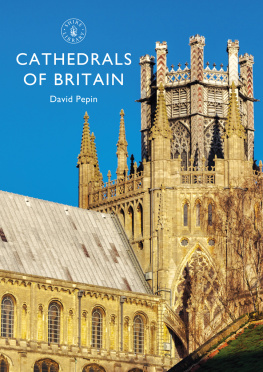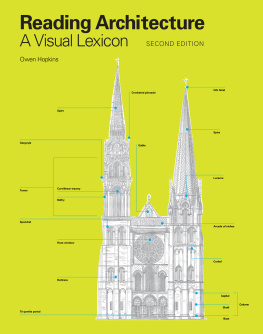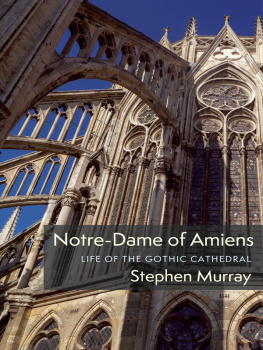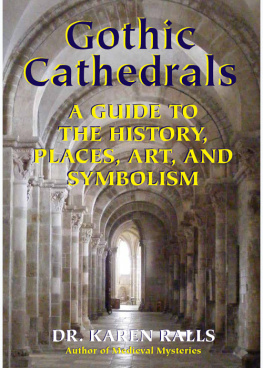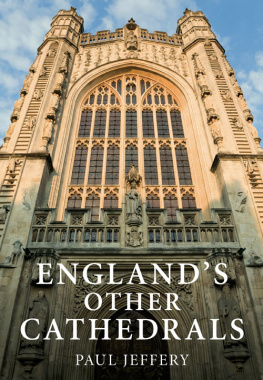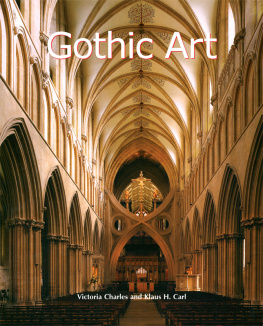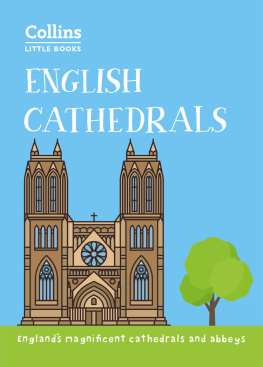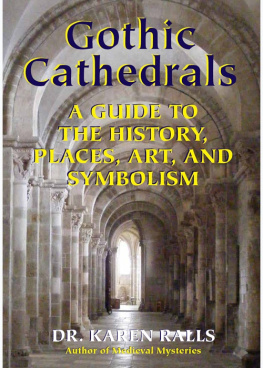
This electronic edition published in 2015 by Bloomsbury Publishing Plc
Published in Great Britain in 2016 by Shire Publications Ltd (part of Bloomsbury Publishing Plc), PO Box 883, Oxford, OX1 9PL, UK.
PO Box 3985, New York, NY 10185-3985, USA.
E-mail:
2016 David Pepin.
First published as Discovering Cathedrals, no. 112 in the Shire Discovering series, in 1971, 1994 and 2004. This new book comprises an extensively revised image selection and entirely new design.
All rights reserved
You may not copy, distribute, transmit, reproduce or otherwise make available this publication (or any part of it) in any form, or by any means (including without limitation electronic, digital, optical, mechanical, photocopying, printing, recording or otherwise), without the prior written permission of the publisher. Any person who does any unauthorised act in relation to this publication may be liable to criminal prosecution and civil claims for damages.
Every attempt has been made by the Publishers to secure the appropriate permissions for materials reproduced in this book. If there has been any oversight we will be happy to rectify the situation and a written submission should be made to the Publishers.
A CIP catalogue record for this book is available from the British Library.
Shire Library no. 831. ISBN-13: 978-1-78442-049-9
PDF e-book ISBN: 978-1-7844-2104-5
ePub ISBN: 978-1-7844-2103-8
David Pepin has asserted his right under the Copyright, Designs and Patents Act, 1988, to be identified as the author of this book.
DEDICATION
For June, Nick and Tom.
AUTHORS NOTE
Every effort has been made to provide correct information in the section on individual cathedrals, but from time to time movable objects, furnishings, monuments and such like may be changed or relocated. Furthermore new works of art constantly enhance the glory of our cathedral churches. Although this book is about rare things and beautiful buildings the author stresses that people come first and that when marvelling at the architecture one should not lose sight of the buildings ecumenical purpose and function in the community. A stroll around can become a purposeful spiritual journey or pilgrimage, an experience to enrich long after leaving the building, which radiates stability, continuity and timelessness.
Shire Publications is supporting the Woodland Trust, the UKs leading woodland conservation charity, by funding the dedication of trees.
INTRODUCTION
Certain of Britains cathedrals rank as architectural landmarks of the highest order, even when they are compared with their counterparts in the rest of Europe. Each cathedral is unique and even the modest ones, whose architecture is less attractive, often possess features and treasures which are unknown elsewhere.
Many people who visit these national shrines and year by year more and more are joining their ranks will naturally have their favourites.
Cathedrals are not museums. While they embody much of great beauty and historical interest, first and foremost they are places of worship and, ideally, centres of service, connected with people past and present. The beauty associated with the worship conveyed in the music, ceremonial and architecture stems from a great faith through the ages. Of course it is not wrong simply to enjoy the architecture, but to know why a church or cathedral was built in the first place adds to this enjoyment. To inspire us there is the architectural beauty of the sacred space, the worship and music. Even in the silence, in the peace and quiet, something of the divine come down to earth will hopefully be experienced, and also the relevance of our nations diverse Christian heritage.

Ely Cathedral: an East Anglian medieval masterpiece, photographed unusually in winter. From afar, across the Fens, the cathedral appears like a ship on an ocean, an unforgettable sight.
The building, therefore, is an expression of something deeper than the mere bricks and stones themselves. A cathedral is not an end in itself. Without people a cathedral is an empty shell. It is the faithful residents who worship in the place regularly, the many people who maintain the building in a host of ways and the casual worshippers and visitors, all these, who are the life of the cathedral and its raison dtre. Each cathedral has a distinct atmosphere, a personality. It is hoped that the following historical and architectural notes will enable readers to get to know these personalities and through their own experience discover the cathedrals for themselves.

Chichester: Sir George Gilbert Scotts spire and tower of 1886 replaced the Norman tower and early fifteenth-century spire which collapsed in 1861.
A cathedral usually has an organisation known as The Friends who have the welfare of the cathedral at heart and will always welcome other like-minded people as members. The Ministry of Welcome, visitors centres, cathedral camps for students, education centres and permanent exhibitions interpreting the work of the cathedral are also becoming familiar features of cathedral life and all providing a vital service to the local and wider community. The author is grateful to many people, both clergy and lay, who have willingly helped in his pursuit of exploring and discovering. He also thanks the staff at Shire Publications and especially Jacqueline Fearn, Elizabeth Crawford and Russell Butcher for their assistance and forbearance.
Alston, Cumbria, 2015.
WHAT IS A CATHEDRAL?

St Augustines Chair, Canterbury Cathedral. Every Archbishop of Canterbury is enthroned in this ancient and very special seat or cathedra. A cathedral is a church in which there is the official chair (cathedra or throne) of the bishop of that diocese. Every cathedral church must have one.
A Cathedral is the main church in a church district known as a diocese (in this case Anglican or Church of England) where the bishop of the diocese has his cathedra or throne. Cathedra means chair, hence the word cathedral for the special church. Usually the largest church in an area fulfils this function, with all that this entails in the way of special services, concerts, diocesan and childrens festivals and popular events like pilgrimages. There is also the daily round of worship even when very few people are present, but nonetheless on behalf of the whole diocese. There are a few very small cathedrals, however, and also some very large abbeys of cathedral-like proportions, such as Westminster, Bath and Tewkesbury, which are not cathedrals. It is the bishops cathedra alone that gives a church cathedral status.
Cathedrals are in an ideal position to foster cultural and pastoral exchange and many links are being forged with cathedrals and dioceses in other parts of the world. Ecumenical chaplains and links with other Faith communities are also part of a cathedrals life and influence. At present there are forty-six dioceses (but forty-eight Anglican cathedrals) in England and Wales, plus Peel, Isle of Man. Each diocese is made up of many parishes, grouped also in deaneries.
Everyone in Britain has a parish church and a cathedral. In England there are two provinces, Canterbury and York. The former includes those dioceses south of a line running from north Shropshire, Staffordshire, east Derbyshire, Leicestershire and Lincolnshire to the Humber. The dioceses north of the line constitute the York province, of which three have been amalgamated (Bradford, Ripon/Leeds and Wakefield) together known as the Diocese of West Yorkshire and the Dales. Both provinces have their own archbishop; the Archbishop of York is styled Primate of England, while the Archbishop of Canterbury is Primate of

